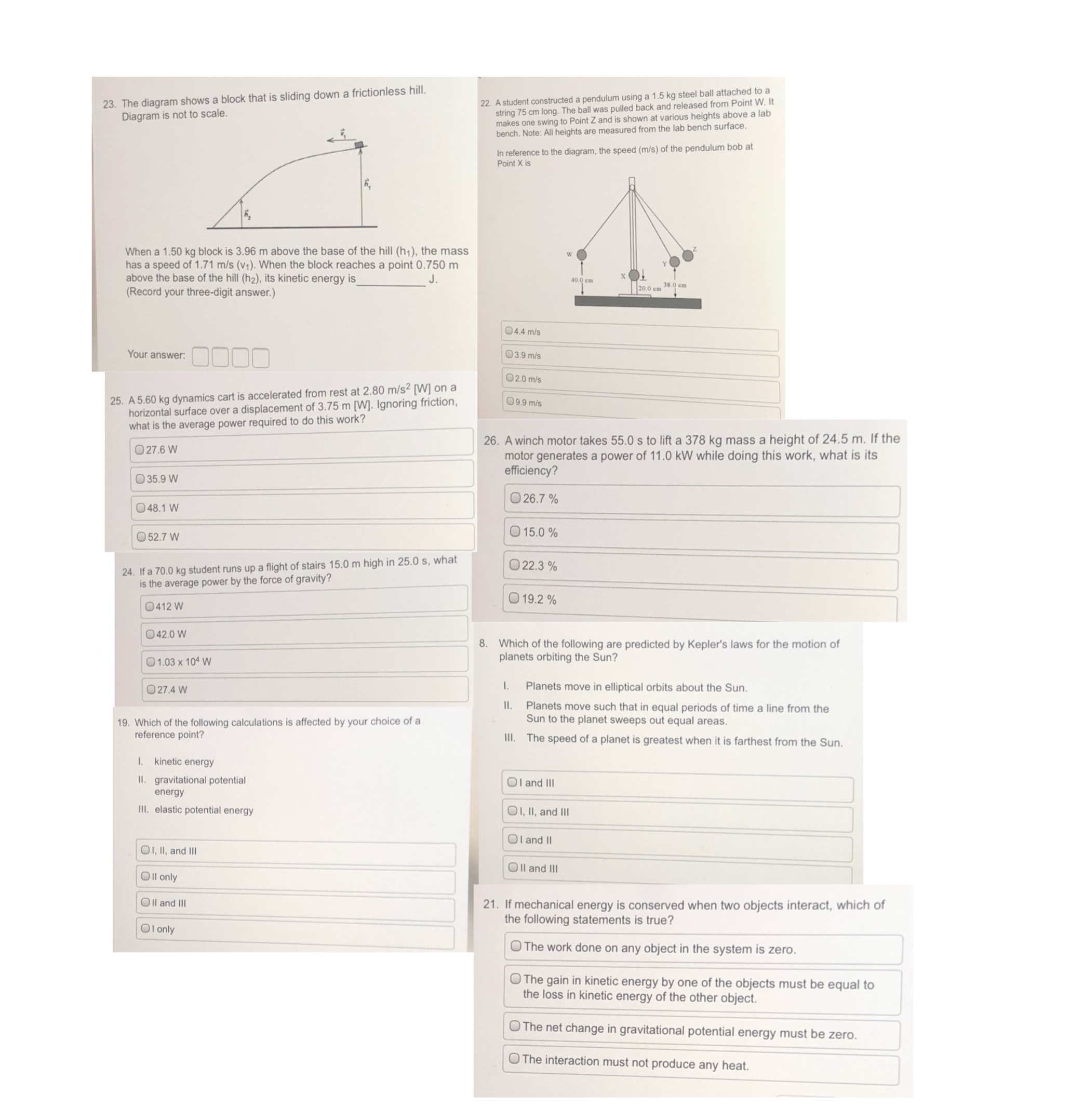23. The diagram shows a block that is sliding down a frictionless hill. 22. A student constructed a pendulum using a 1.5 kg steel ball attached to a string 75 cm long. The ball was pulled back and released from Point W. It Diagram is not to scale. makes one swing to Point Z and is shown at various heights above a lab bench. Note: All heights are measured from the lab bench surface. In reference to the diagram, the speed (m/s) of the pendulum bob at Point X is When a 1.50 kg block is 3.96 m above the base of the hill (h1), the mass has a speed of 1.71 m/s (v1). When the block reaches a point 0.750 m above the base of the hill (h2), its kinetic energy is (Record your three-digit answer.) 04.4 m/s Your answer: DOO 3.9 m/s 02.0 m/s 25. A 5.60 kg dynamics cart is accelerated from rest at 2.80 m/s2 [W] on a horizontal surface over a displacement of 3.75 m [W]. Ignoring friction, 09.9 m/s what is the average power required to do this work? 26. A winch motor takes 55.0 s to lift a 378 kg mass a height of 24.5 m. If the O27.6 W motor generates a power of 11.0 KW while doing this work, what is its efficiency? 35.9 W O 26.7 % O 48.1 W 052.7 W 15.0 % 24. If a 70.0 kg student runs up a flight of stairs 15.0 m high in 25.0 s, what O 22.3 % is the average power by the force of gravity? 19.2% 412 W 42.0 W 8. Which of the following are predicted by Kepler's laws for the motion of O 1.03 x 104 W planets orbiting the Sun? O 27.4 W Planets move in elliptical orbits about the Sun. I1. Planets move such that in equal periods of time a line from the 19. Which of the following calculations is affected by your choice of a Sun to the planet sweeps out equal areas. reference point? Ill. The speed of a planet is greatest when it is farthest from the Sun. kinetic energy Il. gravitational potential Ol and Ill energy Ill. elastic potential energy Ol, 11, and Ill Ol and II Ol, II, and Ill Oil and Ill O'll only Oil and Ill 21. If mechanical energy is conserved when two objects interact, which of the following statements is true? Ol only The work done on any object in the system is zero. The gain in kinetic energy by one of the objects must be equal to the loss in kinetic energy of the other object. O The net change in gravitational potential energy must be zero. O The interaction must not produce any heat







